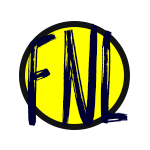It’s Wednesday, which means it’s time for Linda Ryan to put on her goggles. The 58-year-old admits this is her first exposure to Virtual Reality and at first found it jarring because she’s not a gamer.
“I was like, ‘Oh my gosh, this is for kids. I can’t do this. But then the smells start coming out, and it enhances different feelings in my body,” Ryan tells Global News. “I’m a recovering alcoholic — been sober just over two years.”
Her last bender almost cost Linda her life, landing her in hospital shortly after her husband had committed suicide.
“My skin was actually green, eyes were yellow. I didn’t even realize they’d given me a blood transfusion until I opened up a letter which came in the mail after returning home.”
READ MORE:
Moms talk strep A after childbirth, ‘I was just scared that I would sleep and not wake up’
The smells Ryan is referring to is rum. Rum cocktails were Linda’s drink of choice as an alcoholic. It’s the scent which wafts out of the hardware of the Virtual Reality system used at Trafalgar Addiction Treatment Centre in Erin, Ont.
They’re the first to integrate Virtual Reality cue exposure into their detox and recovery programs — which addicts claim is a game-changer in helping curb cravings.
“All of the senses are being triggered. The scents released, sounds heard and scenarios experienced are catered to each client based on their history of addiction and individual triggers,” says Laura Demoe, chief clinical officer of Trafalgar Addiction Treatment Centres.
The airport scenario has been a big one for Linda, given she travels by plane three to four times a year. Going through the Virtual Reality experience before she embarks on her travels helps her avoid relapse.
READ MORE:
Priscilla Presley opens up about Elvis Presley’s descent into drug addiction
“The environment makes me really want a drink. I used to order drink after drink in the airport bar. And then when my flight was called, I’d board in a bad mood, and order more drinks on the plane,” admits Ryan. “The thing about it is you can turn the machine off and talk to the therapist. In real life, you can’t turn it off. And there’s no therapist sitting nearby.”
“You might feel like your heart is racing, your palms are getting sweaty. This is the chance to go over the coping skills previously learned,” says Demoe.
The scenarios Linda encounters using Virtual Reality are all too familiar, and the cravings are real. But being triggered in a safe and controlled space has helped improve sobriety maintenance.
“I’ve found I’ve done more in the last two years than I did in the 10 years prior to that so I have to keep working hard to move forward.”
READ MORE:
Ontario Liberal government to make prescription drugs free for people 65 and older
Powered by WPeMatico

